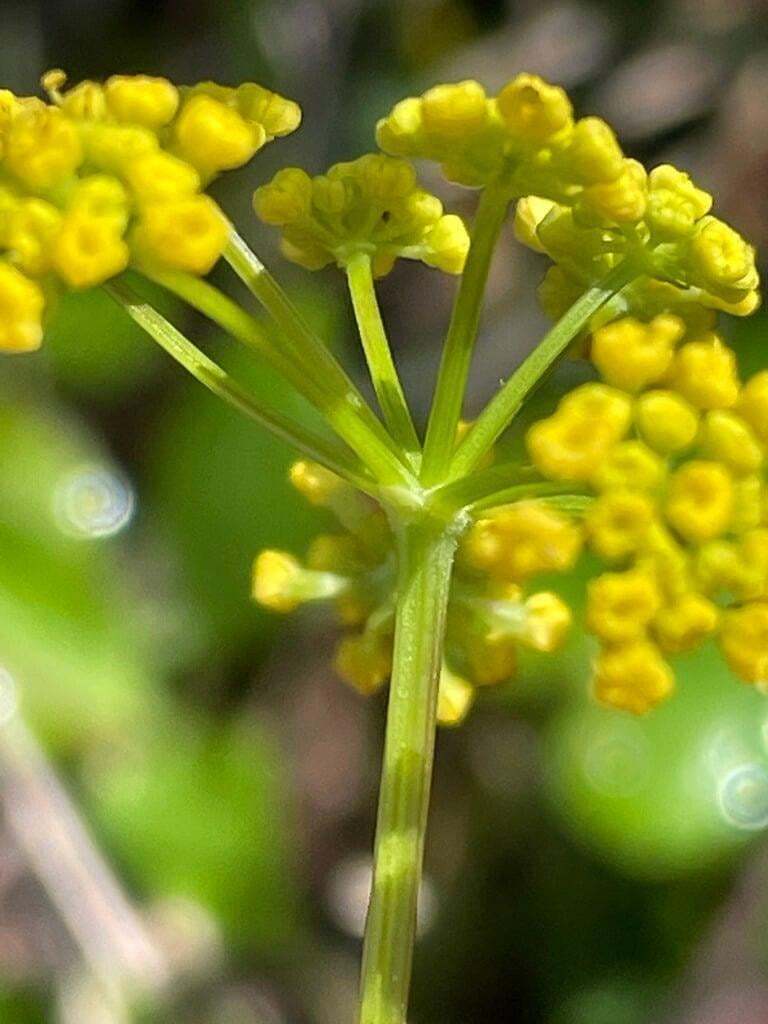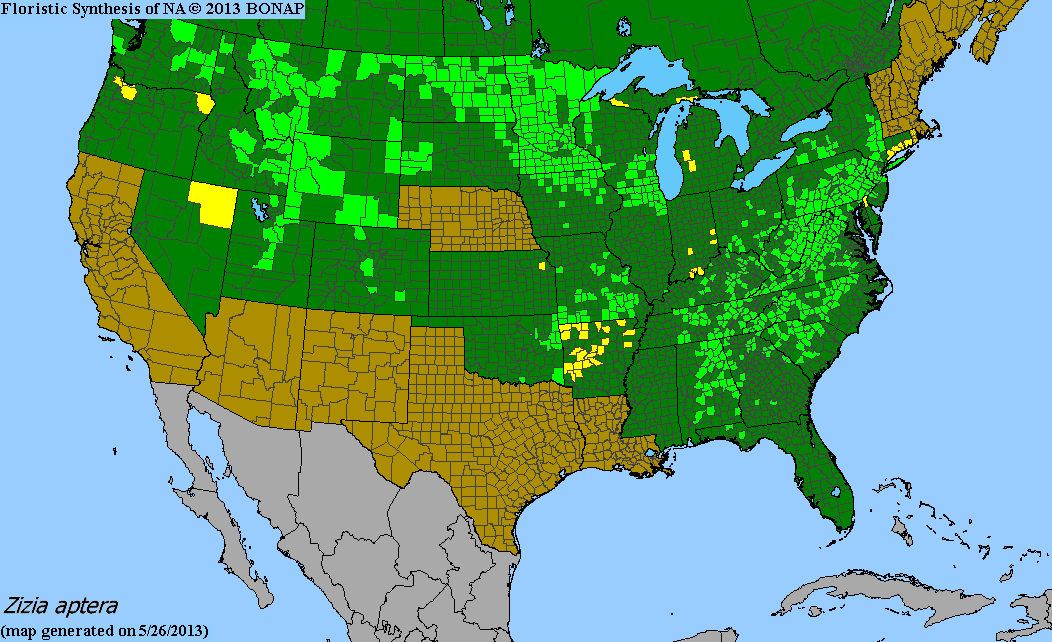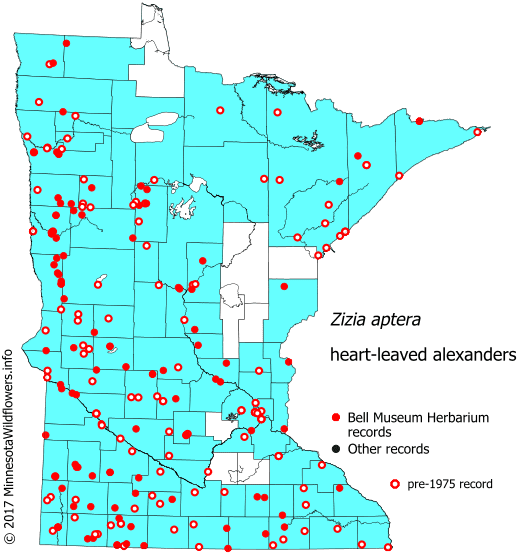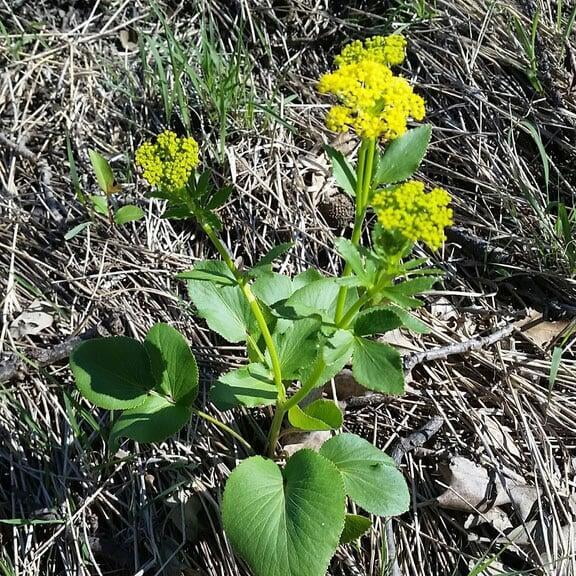Zizia aptera
Heart-leaved alexander Description:
Zizia aptera, commonly known as Heart-leaved Meadow-parsnip, is a native perennial plant found in the central and eastern regions of North America. The plant typically grows 1-3 feet tall and wide, with multiple stems arising from a central root system. It produces clusters of small yellow flowers in early to mid-summer, which are attractive to a variety of pollinators.
One of the most distinctive features of Zizia aptera is its heart-shaped leaves, which are borne on long stalks and have finely toothed edges. The leaves and stems of the plant are covered in fine hairs, giving them a slightly fuzzy appearance. In the fall, the foliage turns a vibrant shade of yellow, adding a burst of color to the landscape.
Zizia aptera is an adaptable plant that can grow in a variety of soil types and light conditions, although it prefers moist, well-drained soils and full sun to partial shade. It is often used in native plant and prairie gardens, where it provides both ornamental value and important habitat for pollinators and other wildlife.
Overall, Zizia aptera is a charming and easy-to-grow plant that adds a touch of whimsy to any garden or landscape. Its attractive foliage, cheerful flowers, and wildlife-friendly qualities make it a great choice for any gardener looking to add some native plants to their outdoor space.
Native Range:
Heart-leaved alexander is found from Washington to Nevada and across to the Carolinas. In Minnesota, Heart-leaved alexander is found nearly statewide.
Standard Plant Information:
Plant Height: 1' - 3'
Bloom Time: May - July
Preferred Habitat: Does well in part shade to full sun and in moist to dry soil. Often found in prairies, open woods, thickets, and shorelines.
Sowing:
For most homeowners, the best option is to scatter seed on the ground by hand broadcasting at a minimum of 16-64 pls ounces per acre. For even coverage, we recommend that you broadcast seed in perpendicular rows across the site to ensure even coverage.
You’ll want to broadcast any grass seed first, which will get raked into the soil lightly. Next, it is ideal to mulch the area lightly with either a clean (no seed) straw or preferably with our native Little Bluestem straw, sold at our retail garden centers. After a light mulching is complete, now it’s time to broadcast your native wildflower seeds, which should not be raked into the soil. A good rain or watering is sufficient to cover the seed.
Planting:
Simply dig a hole in the soil slightly larger than the plant’s roots. Ensure that the soil line of the plant is maintained during the transfer (i.e. the plant should be at the same level with the ground as it was in the pot). Pack any loose dirt back around the plant and make sure you water it well the same day to ensure it has the best chance of survival.




